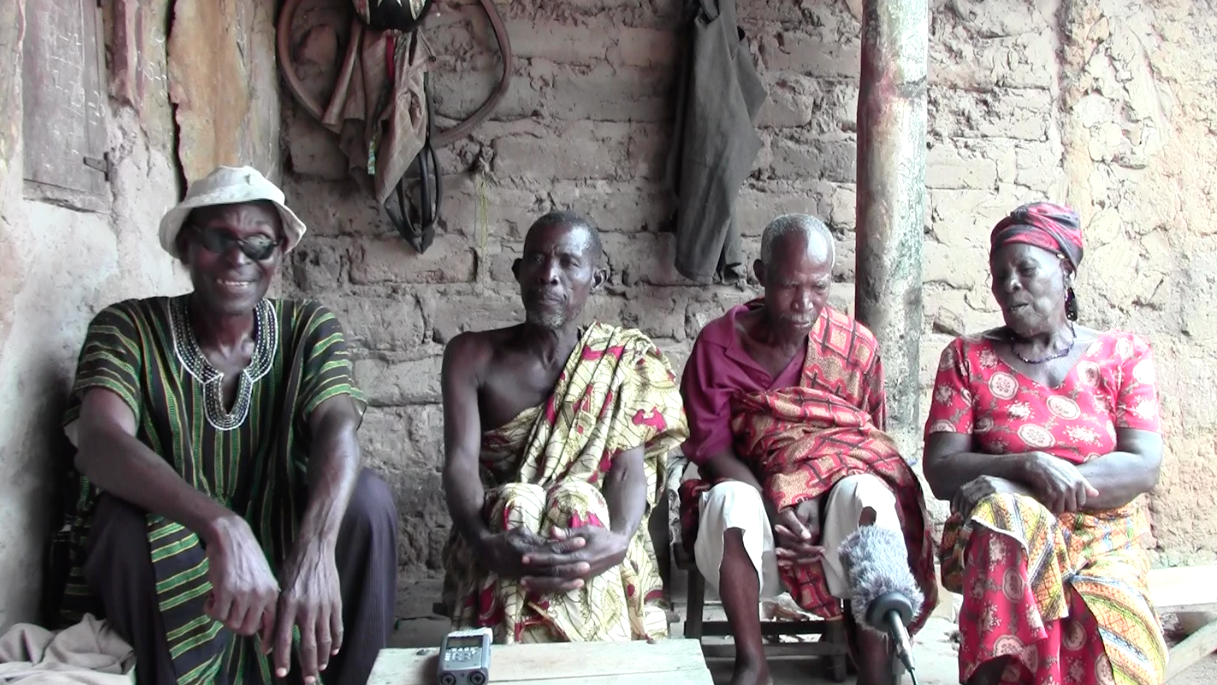Documentation of Fishing Practices Among the Dwang

Landing page image for the collection “Documentation of Fishing Practices Among the Dwang”. Click on image to access collection.
| Language | Dwang |
| Depositor | James Essegbey |
| Affiliation | University of Florida |
| Location | Ghana |
| Collection ID | 0343 |
| Grant ID | SG0193 |
| Funding Body | ELDP |
| Collection Status | Collection online |
| Landing Page Handle | http://hdl.handle.net/2196/cc44a680-febd-4c71-acba-2d5266310ae7 |
Showreel
Summary of the collection
This project aims to document practices related to fishes (including catching, processing, marketing and consumption) among the Dwang communities who inhabit the south of the Volta Lake. Dwang belongs to the northern branch of the Central Guang branch of the Kwa family. Their traditional occupations are fishing and farming, although fishing by natives practically came to halt when a hydro-electric dam was built in 1966, creating the Volta Lake, which is the world’s largest reservoir by surface area. The reasons for the decline in fishing are not clear. The people insist that they haven’t lost their expressions related fishing activities.
Group represented
Ethnologue gives 3 dialects for Dwang namely Bekye (1600 speakers), Kenyen (3300 speakers), and Wiase (3300 speakers). This project focused on Kenyen. Kenyen is spoken in 21 towns and villages. These are Kwame Danso, the capital of the Sene district, Lessi, Akyeremade, Dwang Krom, Kantu, Lemu, Akenten, Nkwankwan Dua, Drobe, Kasa Mente, Menko, Dafa Kope, Akyeremade Battor, Kuku Kwasi, Krenkuase, Banyako, Ntrubuso, Kyeamekrom, Konkonse, Gyasepo, and Mempeasem. The recordings were carried out in Kwame Danso, Lessi, and by the Sene river.
Language information
Dwang is a Niger-Congo language of Ghana spoken by about 8,200 people in the Brong Ahafo region. Dwang has no writing system, and has three dialects, Bekye (1,600 speakers), Kenyen (3,300 speakers), and Wiase (3,000 speakers).
Collection contents
The collection is comprised of 26 bundles that reflect fishing practices amongst the Dwang. Of the 26 bundles, 24 contain either a video of the stories being told or an elicitation video. Bundles Adra 1 and Adra 2 do not include video content, they include only ELAN files. All the materials are openly accessible, without any kind of restrictions, in the online catalogue of the Endangered Languages Archive, ELAR.
Acknowledgement and citation
Users of any part of the collection should acknowledge James Essegbey as the principal investigator, the data collector and the researcher. Individual speakers whose words and/or images are used should be acknowledged by respective name(s). Any other contributor who has collected, transcribed or translated the data or was involved in any other way should be acknowledged by name. All information regarding consultants or contributors is available in the metadata.
To refer to any data from the collection, please cite as follows:
Essegbey, James. 2018. Documentation of fishing practices among the Dwang. Endangered Languages Archive. Handle: http://hdl.handle.net/2196/00-0000-0000-000F-B676-2. Accessed on [insert date here].


